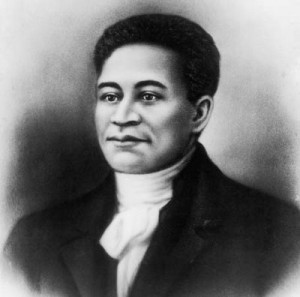 Six years before the Declaration of Independence officially documented the beginning of the American Revolution, the city of Boston had already had enough of the presence of British troops. On the evening of March 5, 1770 a crowd of people gathered at the Customs House of Boston and began jeering at the soldiers. A call for more British soldiers went out and the crowd began throwing snow balls and sticks at the unwelcomed enforcers of British taxation. In the commotion, someone yelled, “Fire!” and soldiers began shooting. What followed next has been remembered in history as the Boston Massacre.
Six years before the Declaration of Independence officially documented the beginning of the American Revolution, the city of Boston had already had enough of the presence of British troops. On the evening of March 5, 1770 a crowd of people gathered at the Customs House of Boston and began jeering at the soldiers. A call for more British soldiers went out and the crowd began throwing snow balls and sticks at the unwelcomed enforcers of British taxation. In the commotion, someone yelled, “Fire!” and soldiers began shooting. What followed next has been remembered in history as the Boston Massacre.
Five townspeople were killed and eight more were wounded. Just who gave the order to fire was never known. After the shooting, the people of Boston demanded the British soldiers be executed for the shootings. The colonial governor instead ordered the soldiers be imprisoned and tried in a fair court of law. Interestingly, John Adams, who would later become the second president of the Unites States, was chosen to represent the British to ensure a fair trial. Most of the soldiers were found innocent on the grounds they were acting in self defense, while two were convicted of manslaughter. But the die was cast for revolution to come by the fateful event of March 5th, 1770.
The leader of the Boston citizens who charged the Customs House was a black man by the name of Crispus Attucks. Attucks led the enraged citizens, shouting, “The way to get rid of these idlers is to attack the main guard; strike at the root; this is the nest!”
As Attucks led the charge, he and those behind him were met with a wall of gunfire. Their clubs, sticks, and snowballs were no match for the well-armed British. Attucks was the first to strike as his 6’2” frame was hard to miss at the head of the mob. Others that fell alongside Crispus Attucks were buried together at Faneuil Hall which came to be named the “Cradle of Liberty.” The common grave is marked by a monument with the epitaph:
Long as in freedom’s cause the wise contend,
Dear to your country shall your fame extend;
While to the world the lettered stone shall tell,
Where Caldwell, Attucks, Gray and Maverick fell.
How Attucks came to be a freedman and sailor in 1770 Boston is a bit of a mystery. A number of historians believed he was a runaway slave who used the name Michael Johnson. The name “Crispus” is mentioned in records from the period without a surname and historians have worked to determine if these refer to Attucks.
Most historians now agree that the following advertisement placed in the Boston Gazette on October 2, 1750 do indeed refer to Crispus Attucks:
Ran away from his Master William Brown of Framingham on the 30th of Sept. last a mulatto Fellow, about 27 years of age, named Crispus, 6 Feet and 2 inches high, short curl’d Hair, his Knees near together than common; and had on a light colour’d Beaverskin Coat, plain new buckskin breeches, blue yarn stockings and a checked woolen shirt. Whoever shall take up said runaway and convey him to his aforesaid master shall have 10 pounds old tenor reward, and all necessary charges paid. And all masters of vessels and others are hereby cautioned against concealing or carrying off said servant on penalty of law.
Twenty years after risking all to find his own freedom, Crispus Attucks gave all in the first shots of what would soon be known as the “Great Experiment.” Attucks’ race was secondary to his consummate heroism and outspoken call for liberty for the American colonists. His death is said to have acted as a catalyst for the American colonists’ eventual war for liberty and freedom from British rule. This war became the American Revolutionary War.
 Off The Grid News Better Ideas For Off The Grid Living
Off The Grid News Better Ideas For Off The Grid Living
